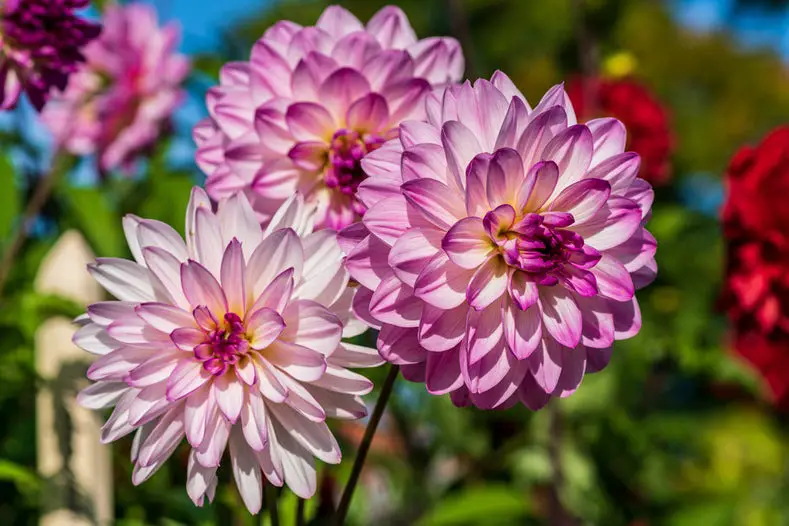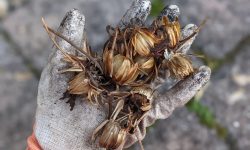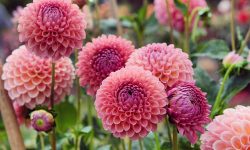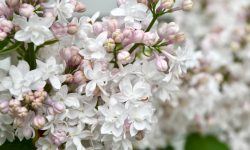If you want a flower that transforms your garden or home into a burst of color, dahlias are an unbeatable choice. Their vibrant petals, elegant structure, and wide variety of sizes make them favorites among gardeners and flower enthusiasts. Whether you grow them in pots on a balcony or in open soil in your backyard, dahlias reward you with long-lasting blooms that brighten up the landscape from midsummer until the first frost. But getting these flowers to thrive takes more than just planting and watering.
Caring for dahlias properly requires knowing how to balance light, soil, and moisture while adapting to different growing environments. Indoor and outdoor dahlia care can differ in key ways, from sunlight needs to pest management and overwintering techniques. Once you understand these essentials, you’ll not only grow healthy dahlias but also enjoy vibrant flowers that last longer and bloom more intensely than you ever imagined.
Understanding Dahlia Growth and Characteristics

Dahlias belong to the Asteraceae family, the same group as sunflowers and zinnias, and they are admired for their spectacular range of shapes, sizes, and colors. Native to the mountainous regions of Mexico and Central America, dahlias thrive in moderate climates with rich, well-drained soil and plenty of sunshine. These plants grow from tuberous roots that store energy and nutrients for the next growing season. Depending on the variety, dahlias can range from compact dwarf types perfect for pots to towering giants reaching over five feet tall. Their blooms vary from small pompons to large dinner-plate flowers, each with its own intricate petal arrangement and vibrant hues.
The growth cycle of dahlias follows a predictable rhythm that helps gardeners plan their care routines effectively. After being planted in spring, the tubers sprout when the soil temperature reaches about 60°F (15°C). During the early stages, dahlias focus on building sturdy stems and lush green foliage. As summer approaches, they enter their blooming phase, displaying brilliant flowers from mid-summer until the first frost. This long flowering period makes dahlias an excellent choice for continuous color in gardens and indoor displays. Understanding this timeline allows you to adjust watering, feeding, and pruning at the right times for the best results.
Another key aspect of dahlia care is their sensitivity to light and moisture. They need a minimum of six hours of direct sunlight daily to develop strong stems and large, vibrant blooms. Insufficient sunlight leads to weaker growth and fewer flowers. While dahlias require regular watering, excessive moisture can quickly cause root rot, particularly in poorly drained soil. Proper ventilation, spacing, and attention to soil conditions ensure healthy root development and steady flowering. Once you understand their growth patterns and preferences, you’ll be able to create the perfect environment for your dahlias to thrive beautifully both indoors and outdoors.
Preparing Soil and Containers for Healthy Dahlias
Creating the right growing environment is essential for dahlias to reach their full potential. These flowers thrive in rich, well-drained soil with a slightly acidic to neutral pH level between 6.0 and 7.0. In outdoor gardens, soil should be loose and friable to allow for strong root expansion. Mixing in organic matter such as compost or well-rotted manure greatly improves soil structure and nutrient content. For indoor planting, a high-quality potting mix designed for flowering plants provides the perfect balance of drainage and moisture retention. Avoid using heavy clay soil, as it can trap water and suffocate the tubers, leading to rot.
Container-grown dahlias need careful consideration regarding size and material. Choose pots that are at least 12 inches deep and wide enough to accommodate the tuber’s spread. Containers made from terracotta or other porous materials are ideal because they allow excess moisture to evaporate and keep the roots aerated. Ensure each pot has adequate drainage holes to prevent waterlogging, which is a common cause of plant decline. When planting tubers indoors, position them horizontally about four inches below the surface, with the sprout or eye facing upward. Lightly cover the tuber with soil and water sparingly until new shoots appear.
Nutrient-rich soil and proper container selection set the foundation for healthy dahlia growth throughout the season. Regularly check the soil texture by feeling it between your fingers — it should be slightly moist but never soggy. If planting outdoors, applying mulch helps maintain even soil temperature and moisture. For indoor plants, use saucers under pots to catch excess water but empty them promptly after watering. With these soil and container preparations, your dahlias will develop robust root systems, ensuring vigorous growth and a longer blooming season that enhances both indoor and outdoor spaces.
Planting Dahlias Indoors for Early Growth
Starting dahlias indoors gives you a head start on the growing season and allows the plants to develop strong roots before being moved outside. This process usually begins about six to eight weeks before the last expected frost date in your region. Begin by selecting healthy, firm tubers free of soft spots or mold. Place each tuber in a wide container or seed tray filled with slightly moistened potting mix. Position the tuber horizontally, with the eye or sprout pointing upward, and cover it with about two to three inches of soil. Keep the container in a warm, bright area where the temperature stays around 65°F to 70°F (18°C to 21°C). Consistent warmth encourages steady sprouting within two to three weeks.
Once shoots appear, move the containers to a well-lit location with plenty of indirect sunlight. A south-facing window or a spot under grow lights works best. Avoid overwatering during this early stage; the soil should remain lightly moist but never saturated. Excess water prevents roots from forming properly and may cause decay. As the seedlings develop, pinch the top growth when it reaches about six inches tall. This encourages bushier plants with more stems, leading to fuller blooms later in the season. Indoor-grown dahlias benefit from occasional air circulation to prevent fungal growth, so lightly open nearby windows or use a small fan for a few hours each day.
By the time outdoor temperatures rise above 60°F (15°C) consistently, your indoor dahlias will be well established and ready for transplanting. Before moving them outside, harden them off gradually by placing them outdoors for a few hours each day in a shaded spot, increasing exposure to sunlight over a week. This transition strengthens the plants and prevents transplant shock. Growing dahlias indoors first not only ensures earlier blooms but also protects your plants from unpredictable spring weather, giving you a more vibrant and resilient garden display later on.
Transplanting and Growing Dahlias Outdoors
Once the risk of frost has completely passed and the soil has warmed to at least 60°F (15°C), dahlias started indoors can be transplanted outdoors. Choose a sunny location that receives at least six to eight hours of direct sunlight each day, as this ensures strong stems and vibrant blooms. The soil should be loose, fertile, and well-draining to prevent root rot. Before planting, prepare the site by digging holes about 12 inches deep and enriching the soil with compost or aged manure. Gently remove the dahlia plants from their pots, keeping as much of the root ball intact as possible. Position each plant so that the crown sits just below the soil surface, and backfill carefully, pressing the soil down to remove air pockets.
After transplanting, water the dahlias thoroughly to help them settle into their new environment. Continue to water them regularly, especially during dry periods, but avoid soaking the soil. Consistent moisture encourages steady root development and flower production, though standing water can quickly lead to tuber damage. Spacing is another key factor in outdoor dahlia success — most medium to large varieties need at least 18 to 24 inches between plants to allow air circulation and reduce disease risk. As they grow, you may need to provide support using stakes or cages to prevent the tall, heavy blooms from bending or breaking in the wind.
Outdoor dahlias benefit from routine maintenance to promote healthy growth. Removing weeds regularly ensures that nutrients and moisture are directed to the plants rather than unwanted competitors. Applying a light mulch layer helps retain soil moisture and moderate temperature fluctuations. It also discourages weed growth and keeps the area looking tidy. Once established, dahlias respond well to balanced fertilizer applications every three to four weeks during the growing season. With proper transplanting and consistent care, your outdoor dahlias will reward you with a dazzling display of blooms that last from midsummer to the first frost.
Watering and Feeding Dahlias for Continuous Blooms
Proper Watering Techniques
Watering plays a vital role in the health and longevity of dahlias. These plants need consistent moisture, but their tubers are sensitive to excess water, which can cause rot. When growing outdoors, water deeply two to three times per week, depending on the weather and soil type. Deep watering encourages roots to grow downward, strengthening the plant’s base and helping it withstand dry spells. Avoid light, frequent watering, as it only moistens the surface and results in shallow root growth. Always check the soil before watering — it should feel slightly damp a few inches below the surface, not soggy.
For indoor dahlias, water only when the top inch of soil feels dry to the touch. Ensure containers have proper drainage so that excess water can escape easily. Using room-temperature water helps prevent root shock, and watering in the morning allows foliage to dry before nightfall, reducing fungal risks. During hot months, you might need to increase watering frequency slightly. Mulching around outdoor plants is another effective way to maintain even soil moisture and prevent evaporation. A careful watering routine keeps dahlias hydrated and vigorous, leading to lush foliage and abundant flowers throughout the growing season.
Feeding for Maximum Flower Production
Dahlias are heavy feeders that require regular nutrients to maintain strong growth and continuous flowering. Start fertilizing when plants reach about one foot tall, using a low-nitrogen formula such as 5-10-10 or 10-20-20. Too much nitrogen promotes leafy growth at the expense of blooms, so choose a fertilizer rich in phosphorus and potassium to encourage flowering and strong tuber development. Apply fertilizer every three to four weeks during the growing season, working it gently into the soil and watering afterward to help nutrients reach the roots.
Indoor dahlias benefit from diluted liquid fertilizer applied every two weeks to sustain steady growth. Avoid overfeeding, as excessive salts can build up in containers and harm the roots. If growing in poor soil, supplement with organic matter such as compost tea or fish emulsion for natural nourishment. Observing your plants is the best way to gauge their nutrient needs — yellowing leaves often indicate a lack of nutrients, while lush green foliage with few flowers suggests too much nitrogen. Balanced feeding ensures your dahlias stay healthy, vigorous, and covered in blooms for months.
Providing the Right Light and Temperature Conditions
Light is one of the most critical elements in achieving strong, healthy dahlias with vibrant blooms. These flowers flourish best under full sunlight, requiring at least six to eight hours of direct exposure each day. Insufficient light leads to spindly stems, pale foliage, and fewer blossoms. In outdoor gardens, select a sunny area that receives bright morning light and partial shade during the hottest part of the afternoon, especially in warmer climates. Morning light not only energizes growth but also dries dew quickly, reducing fungal risks. For indoor dahlias, position pots near a south-facing window where they can benefit from ample natural light. If sunlight is limited, supplement with LED grow lights for twelve to fourteen hours daily to maintain strong stems and abundant flowering.
Temperature consistency is equally important for thriving dahlias. These plants prefer a mild climate with daytime temperatures between 60°F and 75°F (15°C to 24°C). Sudden drops in temperature can stunt growth, while excessive heat above 85°F (29°C) may cause wilting or faded colors. Gardeners in cooler regions should avoid planting outdoors until all frost danger has passed, as even light frost can damage tubers and foliage. Indoors, maintain steady temperatures away from cold drafts, heaters, or air conditioners. Dahlias benefit from slightly cooler nights, which strengthen stems and promote compact, balanced growth. Monitoring temperature stability helps the plants maintain healthy metabolism and continuous blooming.
In extremely hot or dry regions, outdoor dahlias appreciate some protection from harsh afternoon sun. Light shading with garden fabric or nearby taller plants can prevent leaf scorch and moisture loss. Conversely, in cooler areas or during cloudy periods, maximizing sun exposure helps sustain vigorous growth. Indoors, rotating pots weekly ensures even light distribution, preventing plants from leaning toward one side. By carefully managing both light and temperature, you create the ideal environment for dahlias to produce lush foliage and breathtaking flowers that last throughout the growing season.
Pruning, Pinching, and Deadheading for Better Growth
Pinching for Bushier Plants
Pinching is a crucial step in early dahlia development that determines how full and productive your plant will become. When seedlings or young plants reach six to eight inches tall, gently remove the top inch of the central stem just above a set of leaves. This process, known as “pinching out,” redirects the plant’s growth hormones to the lower nodes, prompting multiple side shoots to emerge. As a result, the dahlia forms a bushier, stronger structure capable of supporting numerous flower buds. Pinching also prevents plants from growing too tall too quickly, which can make them unstable in windy outdoor conditions or when confined to small indoor pots.
After pinching, new branches appear within one to two weeks, creating a dense canopy that supports abundant blooms later in the season. This added branching improves airflow and sunlight penetration throughout the plant, both essential for disease prevention and uniform growth. Skipping pinching often leads to lanky stems that topple under their own weight. Taking a few minutes to pinch each plant early on ensures your dahlias mature into compact, balanced, and floriferous specimens that bloom profusely and maintain a pleasing shape all season long.
Pruning for Shape and Strength
Pruning dahlias during their active growth phase is essential to maintaining plant health and vigor. Once the plants are well established, start by removing weak, damaged, or crossing stems that block airflow or shade inner growth. This selective trimming prevents fungal problems like powdery mildew and ensures that nutrients are efficiently directed toward the most productive parts of the plant. Outdoor gardeners should pay special attention to thinning crowded clumps, especially with taller varieties that compete for space and light. Indoor growers can use pruning to control height and preserve symmetry within pots.
Regular light pruning throughout the summer keeps dahlias looking tidy and encourages a continuous flush of blooms. Removing a few of the lower leaves also reduces the risk of pests hiding in dense foliage while improving air circulation at the base. Always sterilize your pruning shears before and after each use to avoid spreading disease. Rather than heavy cutting all at once, trim gradually so plants can recover quickly and maintain steady growth. Consistent pruning not only enhances the plant’s structure but also results in stronger stems and larger, longer-lasting flowers.
Deadheading for Continuous Blooms
Deadheading is one of the simplest yet most effective practices for extending the dahlia’s blooming period. As soon as a flower begins to fade or lose color, cut the stem just above a set of healthy leaves or a new bud. This action redirects the plant’s energy from seed formation to new flower production, ensuring a continuous cycle of blooms throughout summer and into early autumn. Removing old blooms also prevents fungal growth and pest attraction, both of which thrive on decaying petals. For indoor dahlias, deadheading keeps plants neat and encourages compact, vigorous regrowth in limited space.
While deadheading, inspect your plants for signs of disease or insect damage. Removing wilted leaves, mold, or soft stems helps maintain a clean, healthy appearance. Pairing deadheading with light feeding afterward provides an extra boost of energy for developing new buds. Outdoor gardeners can expect to see fresh blooms reappear within a week under good conditions. This regular attention transforms dahlias into long-lasting performers, rewarding consistent care with waves of bright, beautiful flowers that remain stunning from midsummer until the first frost.
Protecting Dahlias from Pests and Diseases
Common Pests and How to Control Them
Dahlias, with their lush foliage and colorful blooms, naturally attract a range of garden pests. The most common intruders are aphids, spider mites, slugs, snails, and earwigs. Aphids and mites feed on plant sap, causing distorted leaves and reduced flowering. Regularly inspecting the undersides of leaves helps you spot infestations early before they spread. To control these pests, spray affected areas with a gentle solution of water and mild soap, or use neem oil for an organic alternative. Ladybugs and lacewings are natural predators that help keep aphid populations in check. Slugs and snails, which feed at night, can be managed by removing them manually or by setting shallow water traps near your plants.
Indoor dahlias may face problems from fungus gnats or mealybugs, especially when humidity is high. Reducing overwatering and improving airflow can prevent most infestations. For severe cases, wiping leaves with alcohol-dipped cotton pads or using insecticidal soap can provide quick relief. Consistent monitoring is key — even a small pest problem can spread quickly and damage developing buds. Maintaining clean soil, removing plant debris, and keeping nearby weeds trimmed all help deter insects naturally. With early detection and proper treatment, you can protect your dahlias and enjoy pristine, healthy blooms throughout the growing season.
Preventing and Managing Diseases
Dahlias are prone to several fungal and bacterial diseases, especially when grown in damp or poorly ventilated conditions. Common issues include powdery mildew, botrytis blight, and bacterial wilt. Powdery mildew appears as a white coating on leaves, usually due to high humidity and poor air circulation. The best prevention is spacing plants properly and watering the soil rather than the foliage. Botrytis blight, which causes brown spots and moldy petals, thrives in cool, wet weather. Remove infected parts immediately and dispose of them away from healthy plants to prevent spread. Avoid overhead watering, as constant leaf moisture encourages fungal growth.
For bacterial wilt and viral diseases, prevention is the only real defense since these infections have no cure. Always use sterilized tools, and avoid reusing soil from infected plants. Rotating planting locations every year also helps reduce disease buildup in the soil. Indoors, ensure that containers have good drainage and use clean, fresh potting mix for each new season. Applying a preventive fungicide spray once a month during peak humidity can further protect vulnerable plants. By combining good sanitation, air circulation, and consistent care, you can minimize disease risks and keep your dahlias vigorous, radiant, and ready to bloom season after season.
Overwintering and Storing Dahlia Tubers
Lifting and Cleaning Tubers
As the first frost approaches, it’s time to prepare your dahlias for winter dormancy. Since dahlias are not frost-tolerant, their tubers must be lifted and stored in most climates to survive until the next season. Begin by waiting until the foliage has blackened from frost, signaling that the growing cycle is complete. Using a garden fork or spade, carefully loosen the soil around the base of each plant, keeping a distance of about a foot to avoid damaging the tubers. Gently lift the entire clump and shake off excess soil. Trim back the stems to about six inches, making it easier to handle during cleaning and storage.
After lifting, rinse the tubers gently with a hose to remove any remaining dirt. Allow them to dry for a few hours in a shaded, well-ventilated area, but avoid direct sunlight, which can cause dehydration. Inspect each clump for signs of rot, damage, or disease, and discard any unhealthy tubers. Label the remaining ones with the variety name before storage to make spring replanting easier. Proper cleaning and preparation are essential to prevent mold and decay over winter. With this careful handling, your dahlia tubers will remain viable and ready to burst back into growth when the next season begins.
Storing Tubers During Winter
Once the tubers are clean and dry, they must be stored in a cool, dark environment that maintains stable temperatures between 40°F and 50°F (4°C to 10°C). The goal is to keep them dormant but not completely dry. Many gardeners prefer storing them in cardboard boxes, wooden crates, or paper bags filled with slightly moist peat moss, sawdust, or vermiculite. These materials help regulate humidity and prevent shriveling. Avoid plastic containers or sealed bags, as they trap moisture and encourage mold growth. Check the tubers every few weeks throughout winter, removing any that show signs of rot and lightly misting the medium if it becomes too dry.
For those growing dahlias indoors year-round, it’s possible to overwinter smaller plants by cutting them back and placing the pots in a cool, dimly lit space. Water sparingly, just enough to prevent the soil from becoming bone dry. When spring arrives, bring the tubers or pots back to a bright location, gradually increase watering, and resume normal care. This transition awakens the tubers naturally, preparing them for another season of vigorous growth and abundant blooms. Proper overwintering ensures your dahlias remain strong and productive year after year, rewarding your patience with an endless cycle of color and beauty.
Displaying and Enjoying Dahlias Indoors
Bringing dahlias indoors allows you to enjoy their radiant colors and elegant forms up close. Whether freshly cut from the garden or grown in pots, dahlias can instantly brighten any living space with a touch of natural beauty. When cutting flowers for display, choose blooms that are fully open but still firm, as immature buds often wilt quickly. Cut stems early in the morning when temperatures are cool and place them immediately in a bucket of lukewarm water. Remove the lower leaves to prevent them from decaying in the vase and trim the stems at a diagonal angle to increase water absorption. Arranged thoughtfully, dahlias create stunning centerpieces that complement both modern and rustic interiors.
To extend vase life, change the water daily and re-cut the stems every two to three days. Adding a small amount of flower preservative or even a teaspoon of sugar can help maintain freshness. Keep arrangements out of direct sunlight and away from heat sources, as these conditions accelerate wilting. Smaller dahlia varieties, such as pompon or cactus types, are particularly well-suited for tabletop or shelf displays, while larger dinner-plate dahlias make dramatic focal points. With proper care, cut dahlias can last up to a week indoors, maintaining their vibrant colors and graceful texture throughout.
For those who prefer living plants indoors, compact dahlia varieties thrive beautifully in decorative pots near bright windows. Rotate the pots weekly to ensure even light exposure and continue regular watering to maintain lush foliage. These potted dahlias can be moved outdoors once warm weather returns, making them versatile and practical for both home décor and garden enjoyment. Incorporating dahlias into your indoor space brings seasonal warmth and elegance, allowing you to enjoy the splendor of your garden year-round.
Seasonal Maintenance and Year-Round Dahlia Care Tips
Caring for dahlias doesn’t end once the blooms fade or the growing season changes. To keep your plants performing their best year after year, it’s important to adjust your maintenance routine with the seasons. In early spring, focus on preparing the soil and checking stored tubers for signs of decay or dryness. Rehydrate slightly shriveled tubers by misting them lightly a few days before planting. When planting season begins, space the tubers properly and apply a balanced fertilizer to give them a strong start. As plants grow, staking tall varieties early prevents later damage from heavy blooms or strong winds. Regular weeding and loosening the soil surface help roots breathe and absorb nutrients efficiently.
During summer, dahlias require steady attention to maintain their peak appearance. Consistent watering and feeding ensure continuous blooms, while weekly inspections for pests or disease help you catch problems early. Removing spent flowers through deadheading keeps the plant productive and prevents it from channeling energy into seed formation. In hotter regions, shading plants during intense midday sun prevents stress and leaf scorch. Indoor dahlias should be rotated regularly for even growth and pruned to control their shape. Fertilizing every three to four weeks with a low-nitrogen blend maintains vibrant foliage and encourages bud formation throughout the warm months.
As autumn approaches, gradually reduce watering to help tubers prepare for dormancy. Once frost hits, cut the stems back and begin the process of lifting and storing the tubers for the winter. For those in mild climates, adding a thick mulch layer can protect in-ground tubers from light frost. During the dormant months, monitor stored tubers every few weeks to ensure they remain firm and mold-free. By adjusting care practices seasonally and responding to the needs of your plants, you’ll enjoy stronger growth, more abundant flowers, and a reliable display of beauty every year.
Frequently Asked Questions (FAQ) About Caring for Dahlias
How often should I water my dahlias?
Dahlias prefer consistently moist but not soggy soil. Outdoors, water deeply two to three times per week, depending on rainfall and temperature. Indoors, check the top inch of soil — if it feels dry, water gently until excess moisture drains out. Always ensure good drainage to prevent root rot.
Can dahlias grow well indoors year-round?
Yes, but they need bright light and proper airflow. Place indoor dahlias near a sunny south-facing window or use grow lights for at least twelve hours daily. Maintain temperatures between 60°F and 75°F (15°C–24°C) and prune regularly to keep them compact and healthy.
When should I dig up and store dahlia tubers?
Lift tubers after the first frost when the foliage turns black. Clean and dry them thoroughly before storing in a cool, dark place with moderate humidity. Check them monthly during winter and remove any that show signs of mold or decay.
Why are my dahlias not blooming?
Lack of sunlight or excess nitrogen in fertilizer are common reasons. Ensure your plants receive at least six hours of direct sun daily and use a balanced, low-nitrogen fertilizer. Regular deadheading also encourages new blooms throughout the season.
Do dahlias come back every year?
In warm climates, dahlias can survive winter in the ground. In colder regions, they are treated as tender perennials — tubers must be lifted and stored indoors over winter, then replanted in spring for renewed growth and flowering.
Conclusion
Caring for dahlias, whether indoors or outdoors, is a rewarding experience that combines patience, attention, and love for beauty. From preparing the soil and managing light to pruning, feeding, and overwintering, every step contributes to the brilliance of their blooms. Dahlias respond generously to consistent care, producing waves of vibrant flowers that brighten any space. By understanding their needs and adapting your routine to each season, you ensure strong growth and breathtaking results year after year. With the right approach, your dahlias will transform ordinary spaces into stunning displays of color, elegance, and natural joy.






